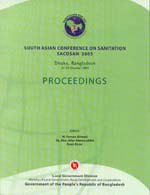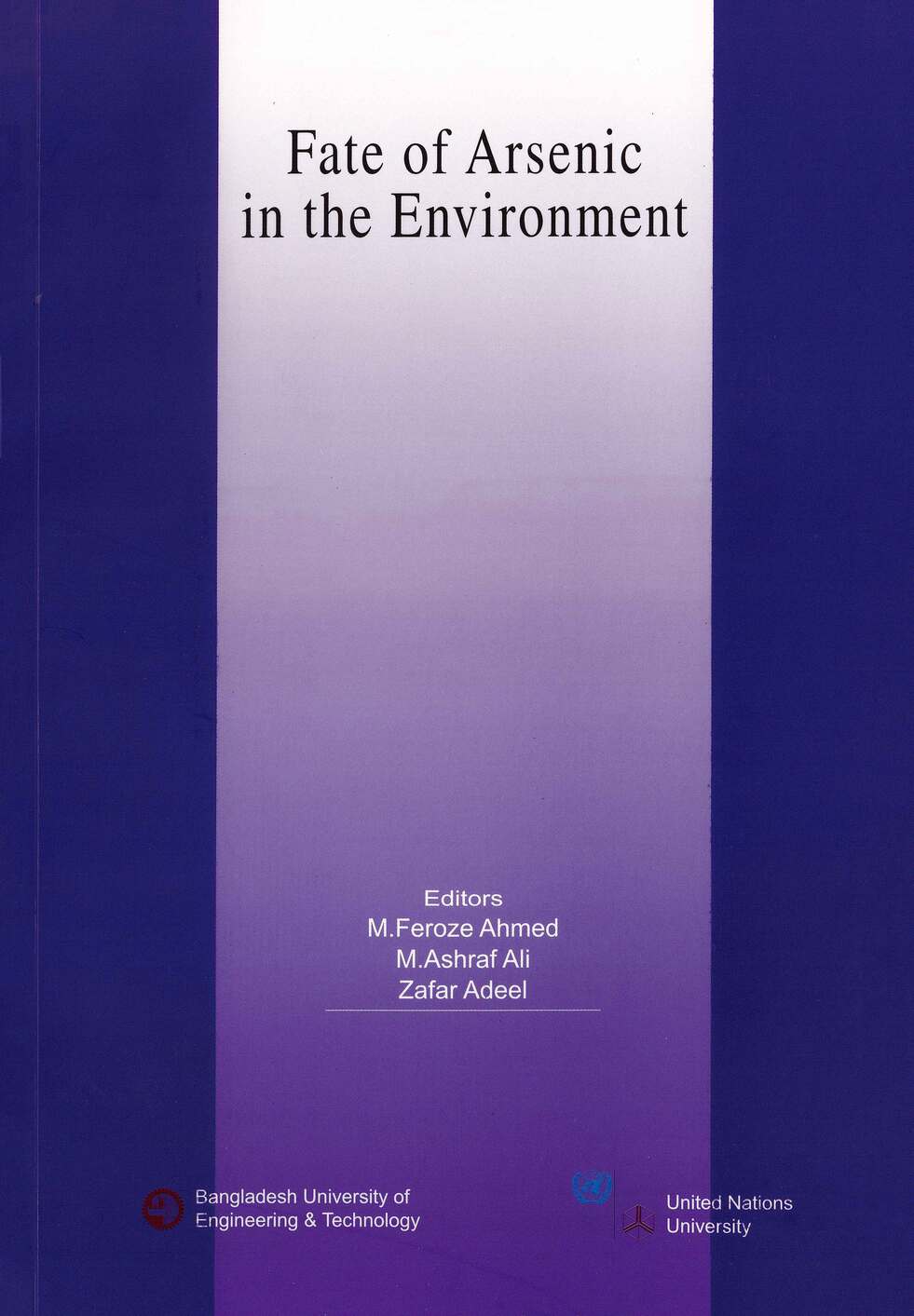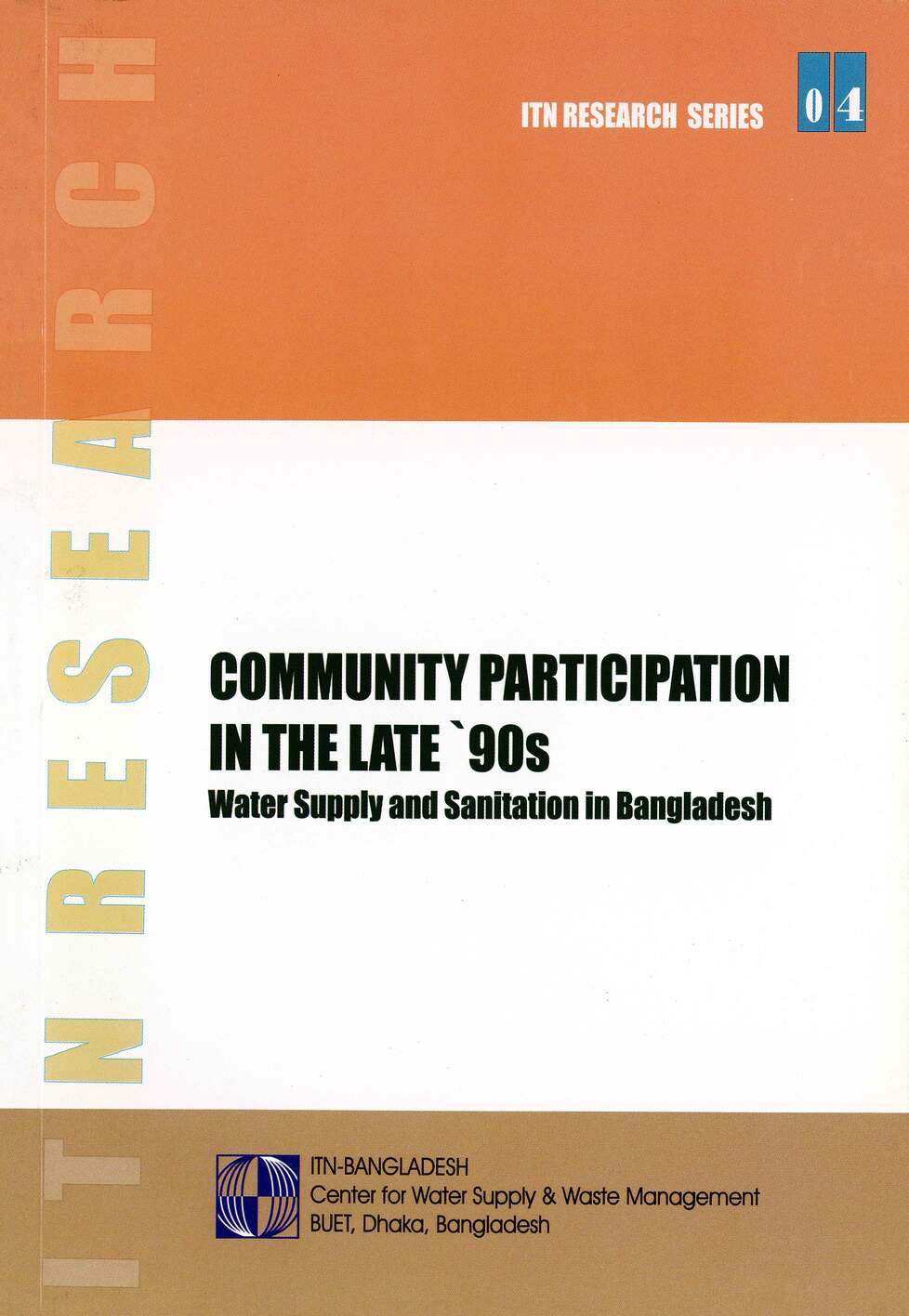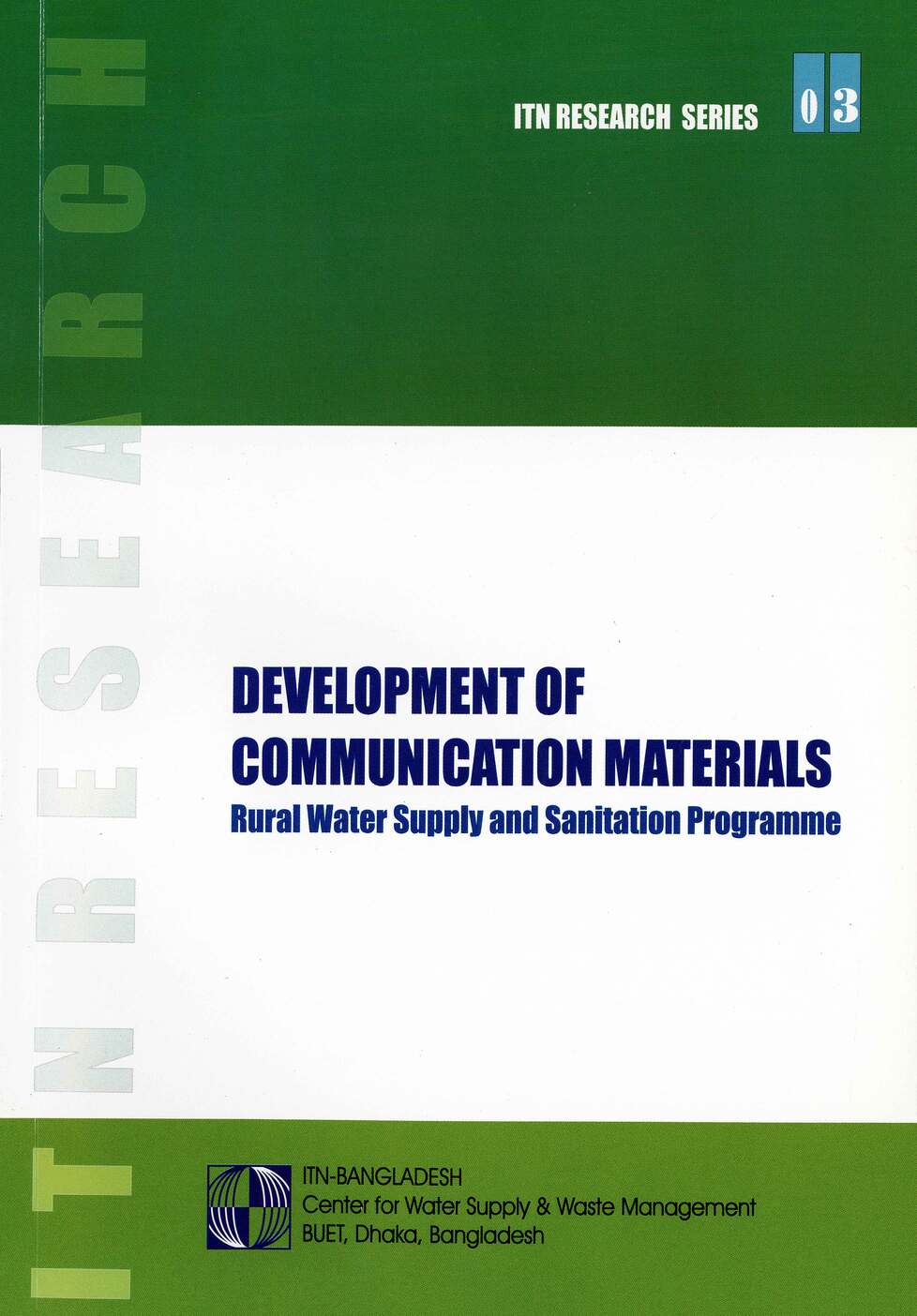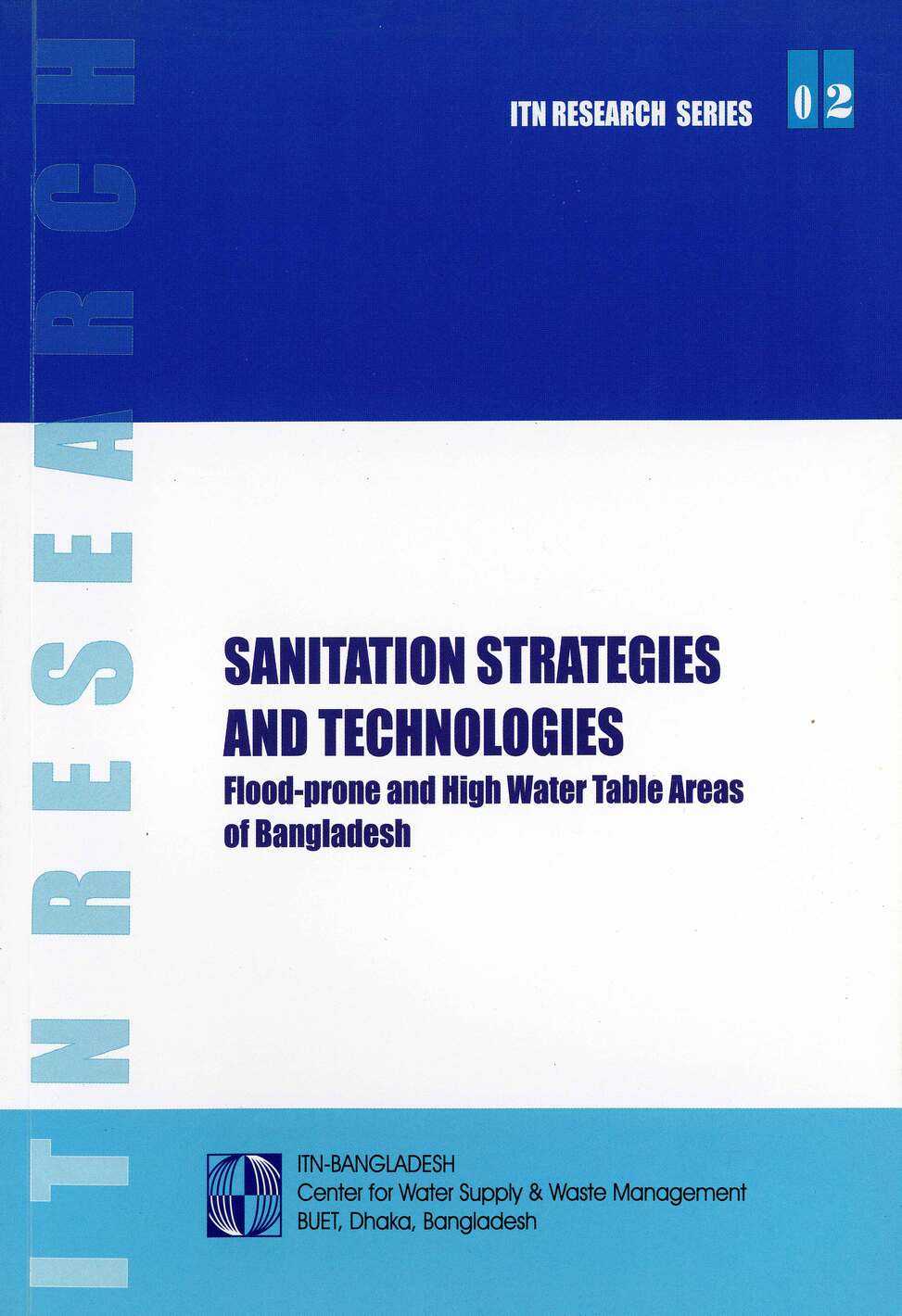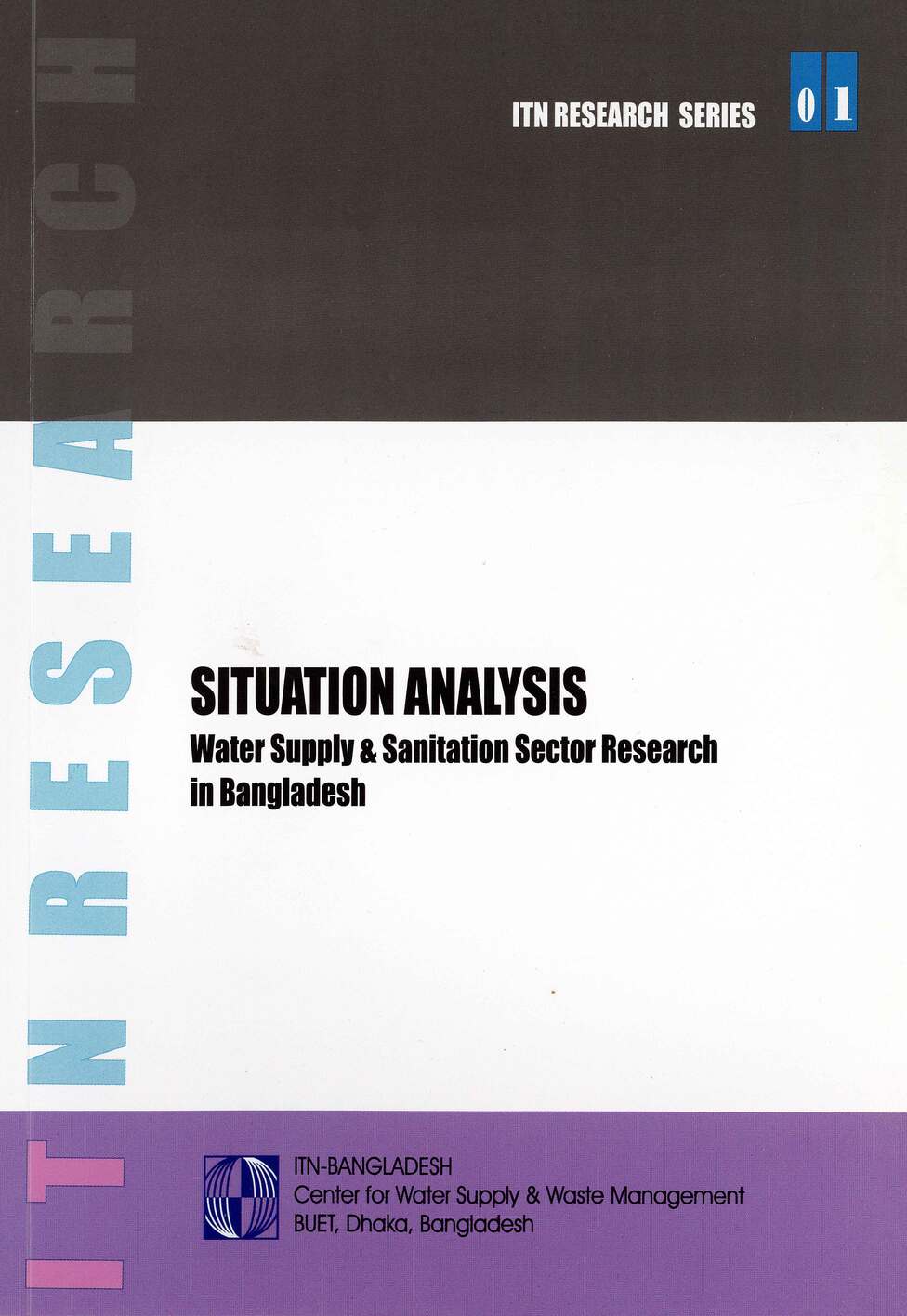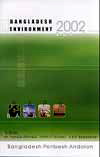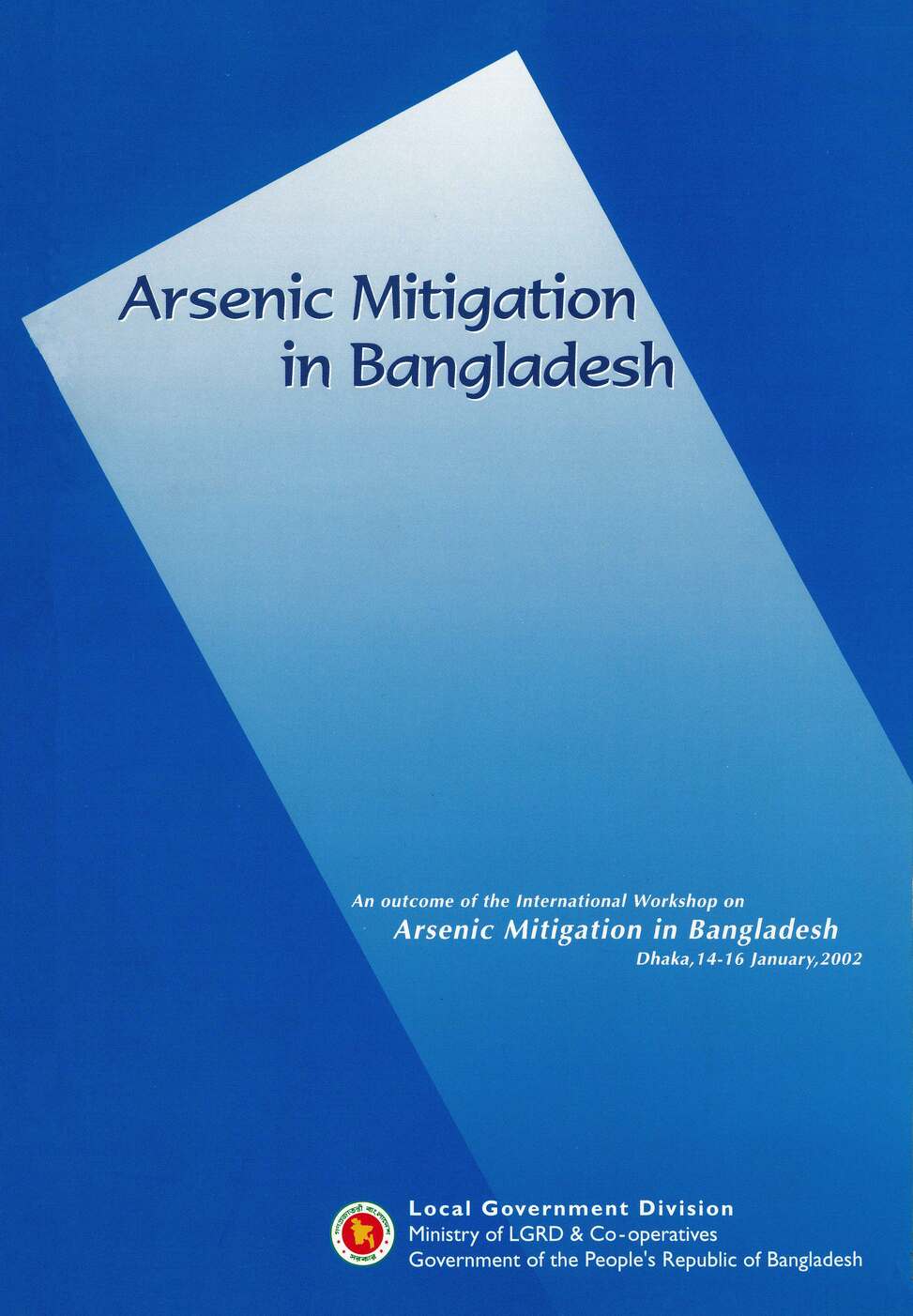Publications
Find journal articles, external publications, and ITN-BUET’s own portfolio of reports and briefs.
South Asian Conference on Sanitation (SACOSAN 2003) – Proceedings
A total of 301 delegates and guests from nine Country Delegations (Afghanistan, Bangladesh, Bhutan, India, Maldives, Myanmar, Nepal, Pakistan and Sri Lanka) and other local and international organisations, participated in […]
Author(s)/Editor(s): Abu Jafar Shamsuddin, M. Feroze Ahmed, Ryan Knox
2003
A Study on Development of an Arsenic Test Kit and Some Arsenic Contamination Issues
A field kit was developed which used non-toxic Silver Nitrate soaked papers as indicator. Adsorption capacities of arsenic by different materials were tested in the laboratory, in which good removal potential was found in Bijoypur clay, bleached sawdust and newspaper pulp.
Researcher(s): Abul Khair
First Edition: June, 2003
Fate of Arsenic in the Environment
This publication is a compilation of papers presented at the BUET-UNU International symposium on Fate of Arsenic in the Environment. The papers broadly describe the fate of arsenic extracted through tubewell water and transported with surface water, its presence in water-soil-plant environment …
Author(s)/Editor(s): M. Feroze Ahmed, Md. Ashraf Ali, Zafar Adeel
First Edition: February, 2003
Community Participation in the late’90s Water Supply & Sanitation in Bangladesh
Personal and household behaviors and sanitation practices by the majority of the population to a large extent are unhygienic. Program planning whether it be for the installation of a latrine or sinking of a tube-well, it must always take into consideration the needs of the ultimate users and responsibilities must be delegated among the community according to capability and sustainability.
Researcher(s): Afsana Wahab
First Edition: January, 2003
Development of Communication Materials Rural Water Supply and Sanitation Programme
People’s perception about the existing communication materials on rural water supply and sanitation programme has been examined in the study wherefrom the factors influencing the effectiveness of materials have been identified and finally, a set of recommendations has been made towards development of effective communication materials.
Researcher(s): Nazmul Ahsan Kalimullah
First Edition: January, 2003
Sanitation Strategies and Technologies Flood-prone and High Water Table Areas of Bangladesh
Overflowing of latrine during monsoon flood and heavy rainfall is a common scenario in Bangladesh. To overcome this common problem, an attempt was made to provide technological solutions for safe sanitary latrines based on the concept of ‘raised latrine’ constructed above flood level in flood-prone and high water table areas. The technologies include ‘Earth Stabilized Raised Pit Latrine’, ‘Step Latrine’, ‘Mount Latrine’ and ‘Sand Enveloped Pit Latrine’.
Researcher(s): Noor M. Kazi
First Edition: January , 2003
Situation Analysis Water Supply and Sanitation Sector Research in Bangladesh
By and large, This document is a comprehensive database of research and development activities of the Government, non-government organizations, development partners and other agencies working in the Water Supply and Sanitation (WSS) sector. The situation of research in WSS sector in Bangladesh with emphasis on technical, social and arsenic interventions have been analyzed in this study. The followings have been delineated in the report
Researcher(s): Mohibur Rahman
First Edition: January, 2003
Bangladesh Environment 2002
It is a collection of selected technical papers that were presented at the second International Conference on Bangladesh Environment and presents a snapshot of Bangladesh environment at the present time, as understood by the experts from all over the world.
Author(s)/Editor(s): A.B.M. Badruzzaman, M. Feroze Ahmed, Saleh A. Tanveer
December, 2002
Alternative Water Supply Options
The sources of water available in Bangladesh for development of alternative water supplies are groundwater, surface water and rain water. An estimated 29 million people, exposed to arsenic contamination in excess of 50 µg/L through 27% contaminated shallow tubewells and few production wells in urban …
Author(s)/Editor(s): M. Feroze Ahmed
First Edition: May, 2001
Arsenic Mitigation in Bangladesh
This publication is an outcome of the International Workshop on Arsenic Mitigation in Bangladesh held in Dhaka. The workshop focused on some important technical issues regarding hydrogeological and health aspects of arsenic contamination and alternative water supply options …
Author(s)/Editor(s): Chowdhury Mufad Ahmed, M. Feroze Ahmed
First Edition: May, 2001


